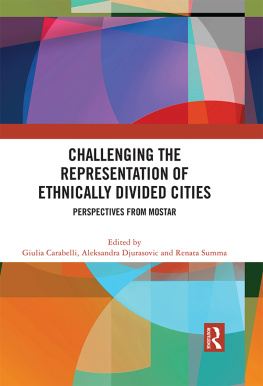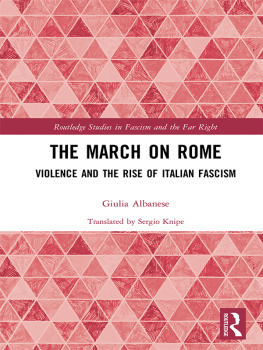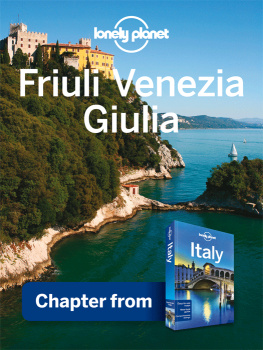Justified by Faith. The intriguing story of Giulia Gonzaga, Countess of Fondi
by Tommaso Avallone
Publishing director: Jason R. Forbus
ISBN 978-88-33465-28-9
Published by Ali Ribelli Edizioni, 2020
Essays History
Any reproduction of this book is strictly forbidden, even partially, with means of
any kind, without the clear authorization of Editor.
Introduction
Memories of a young man
The Santuario della Montagna Spaccata (The Holy Place of the Split Mountain) located on a remote seaside cliff overlooking the Italian town of Gaeta was originally a monastery built over one thousand years ago by the Benedictine monks. I still have vivid memories of my first visit to the Montagna Spaccata. I was about ten years old in 1957. My mother and I, along with a group of neighbors, met our parish priest at the entrance of a tunnel located near the base of the mountain. After lighting candles, we were led up the dark, musty tunnel while singing religious hymns. We emerged on a rocky ledge overlooking the crystalline blue sea as gentle waves caressed the golden sand of Serapo beach.
A brief walk along a wooded trail brought us to the wrought iron gates of the sacred grounds of the Montagna Spaccata. Entering the Church of the Santissima Trinita (Most Holy Trinity) we were reminded that Saint Benedict, Saint Francis of Assisi, and Saint Philip Neri had visited and prayed at this miraculous location many centuries before us.
After celebrating mass, we followed the priest to the nearby entrance of the Montagna Spaccata. According to local legend, the large fissure in the mountain formed when Jesus cried out with a loud voice and yielded up his spirit and behold the earth shook, and the rocks were split. When the centurions and those who were with Him saw the earthquake and what took place, they were filled with awe, and said, Truly this was the Son of God.
Proceeding down the narrow fissure in the mountain, we stopped at what appeared to be the impression of a human hand in the rock called la mano del Turco (the hand of the Turk). The marble sign next to it stated, Its told that a non-believer, possibly a Turkish pirate, refused to believe that the mountain split when Jesus Christ died on the cross, and to scorn this, the pirate laid his hand on the rock. The rock became soft and the impression of his hand remained in the rock. Circa 15th Century.
As I read the words on the marble sign, I felt a sense of amazement thinking I was witnessing the result of a supernatural event. After a few moments of reflection and prayer, we continued down the narrow fissure to the Chapel of the Crucifix. The small chapel appeared to be built on a large boulder that fell from the top of the mountain and became lodged about halfway down the fissure. From a narrow ledge outside the chapel, we admired the spectacular view of the cliffs as they narrowed toward the turquoise sea below.
We then walked a short distance to the astounding natural phenomena called La Grotta del Turco (Grotto of the Turk). Entering the enormous cavern from an opening at the top of the mountain, we walked down hundreds of steps to the rocky beach at the bottom of the cave. Every sound took an eerie tone, especially the priests voice as he explained how the grotto came to be known as grotto of the Turk. He told us that hundreds of years before Turkish pirates used the grotto to hide their ships before launching surprise attacks on merchant vessels sailing to and from the port of Gaeta. We were then told the story of a sinister Turkish pirate called Barbarossa who once landed on our shores and attacked the neighboring town of Fondi in order to capture the beautiful princess of our region.
At home that evening, I asked my mother if the stories we heard at the Santuario had actually taken place. With a look of disappointment she replied, Why must you always be like doubting Thomas? Of course the stories are true, why would they make them up?
A couple of years later when we left Gaeta in search of the American dream, I still pondered whether the stories of miracles and pirates were factual or just folklore. Although I was only twelve years old, I was old enough to suspect that for many people in my small town, faith, superstition, and history were all intertwined.
As an adult I had the good fortune to occasionally return to my native town and visit with relatives and friends. On one such occasion, I took the opportunity to drive up to the site of the Holy Grounds of the Montagna Spaccata and relive one of the most memorable experiences of my youth.
This time as I made my way down the fissure in the mountain, I noticed several Christian symbols along the rock wall a short distance from la mano del turco.
The smooth, polished quality of the Christian symbols seemed extraordinarily similar to that of the mano del Turco. When I inquired how the Christian symbols came to be I was told they were carved in the rock sometime back in the 16th Century. The thought then entered my mind: whats the chance the Christian symbols and the hand impression were all sculpted in the rock by a talented artist?
It also occurred to me that the marble sign near the mano del Turco introduced the story with the words si racconta (its told). The introductory words its told obviously imply the story is hearsay and not necessarily factual. Conducting a bit more research it became clear, at least to me, that the so-called miracles of the split mountain and the hand impression in the rock are simply folklore.
While the stories of miracles associated with the holy grounds of the montagna spaccata are most likely folklore, historical research confirmed that in 1534 CE the town of Fondi, a few miles north of Gaeta, was indeed raided by the infamous Muslim pirate called Barbarossa. The following synopsis from a publication endorsed by the town of Fondi seemed to support elements of the story I heard at the Montagna Spaccata when I was a youth.
La fama della sua bellezza e cultura fece accorrere a Fondi non solo artisti e illustri personaggi, ma anche il famigerato corsaro Kair-Ed-Din detto Barbarossa, che nel 1534 assal la citt per rapire la bella Giulia Gonzaga e donarla al Sultano Solimano II.














 Edizioni
Edizioni